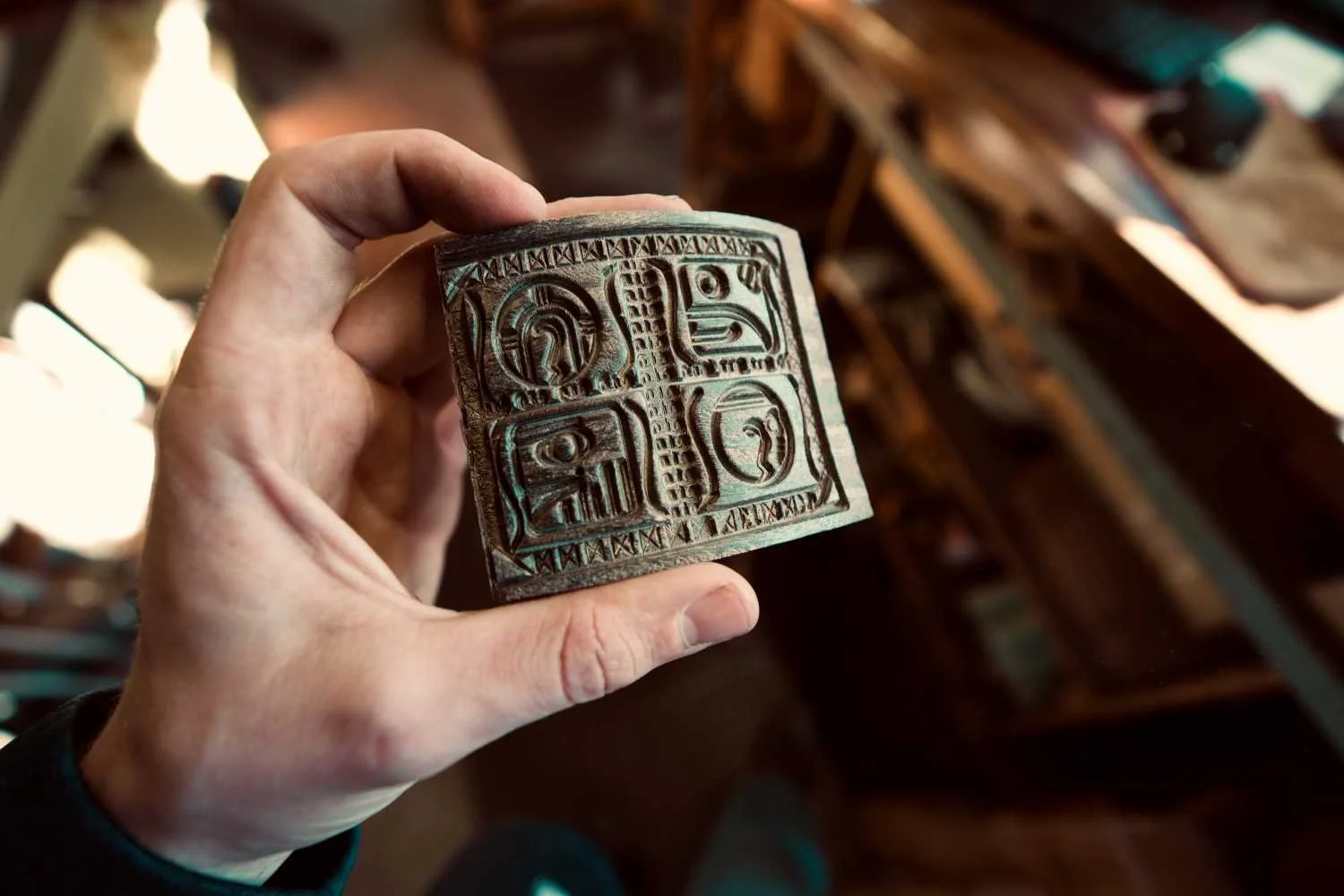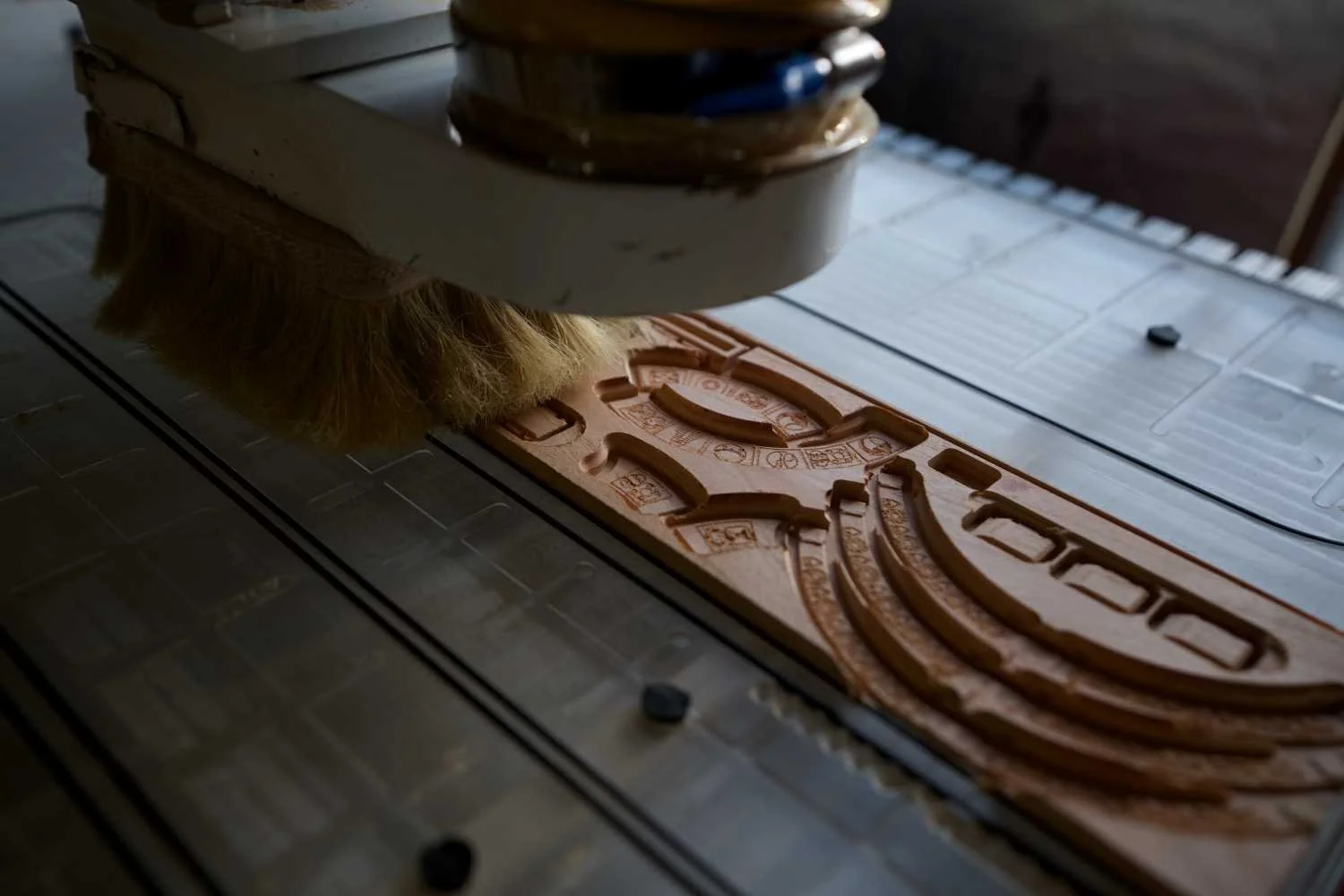SunDial
Days of Future Past
The Maya “calendar round” is a mind boggling, two thousand year old invention by that ancient culture which tracked dates precisely over extreme expanses of time. It was a product of two separate calendars. In the “Tzolk’in” calendar, there were no months, but instead smaller time periods were grouped into 13 numbers, which were in turn paired with 20 individual day “glyphs”, resulting in 260 unique days of this calendar. If you form a set of enveloped gears, with the smaller inner gear having 13 spokes, and the larger outer one having 20 wells, each unique pairing of spoke and well will only repeat after a cycle of 260 combinations. This calendar was useful in tracking nine cycles of the moon, the length of human gestation, for example, and agricultural growth cycles. Another calendar the Mayans used, known as the “Haab”, was based on the solar year, and broke time up into 18 months of 20 days each. If you do the math, this only yields 360 days, which were the “named days” in each year. This also left 5 “unnamed” days per year, which were given their own separate month, and were very unlucky indeed. It was best not to do anything too puzzling on these occasions. But the Mayans did not stop there. They also created the “calendar round”, a longer cycle of 52 years (18,980 days), by merging both the Haab and Tzolk’in calendars together in a triple set of interlaced gears. On the calendar round, this “long cycle” of 52 years would play out as the circles and gears turned before the three circles lined up again at the starting point. The Mayans had such an accurate accounting of the days they became incredible astronomers, able to precisely chart the movements of the sun, stars, moon and planets, which they imagined as gears turning the cosmos to the timing of their calendar, and opening to the divine on very special occasions. This was the very premise that started the gears turning into what would become the Sundial Box.
SunDial by Jesse Born and Robert Yarger
Jesse Born and Robert Yarger, two of the world’s best puzzle box artists, have created a modern masterpiece of mechanical secrets. The sequel to the Sea Chest, the Sundial is the second installment in Jesse’s Voyager Trilogy, which links the treasure seeking pirates of old to the wise and mysterious ancient Mayans and ultimately leads into the unknown and otherworldly. Jesse had been looking into the Lost City of Gold, a fabled kingdom in South America, when inspiration struck. He took his original idea for a circular box covered in carvings from an ancient civilization and created a lifelike relic that would look right at home in the most secret chamber of a prehistoric jungle tomb.
SunDial production
photo courtesy of Jesse Born
Jesse and Robert had been discussing a collaboration for some time, but the timing was never quite right between them. For the Sundial, the stars lined up at just the right moment to allow a ray of sunlight to shine into the temple, illuminating the path forward. Jesse told Rob his ideas for a circular box and theme, and Rob showed Jesse the Maya Calendar with planetary gears. The box evolved literally around that initial concept of interlaced gears on top, and what else would be possible from there.
a secret relic of the ancient world
Robert Yarger, a brilliant designer who has created some truly remarkable mechanical wonders in wood, like the Checkmate Box, recognized Jesse’s talent and ingenuity from the Sea Chest. He remarks, “When Jesse first presented his concept for this round puzzle, I saw it as unique, ambitious, and somewhat intimidating, especially with that hole in the middle, that forced all compartments to exist within a donut shape - insane!! All elements of a traditional box design evaporated with that. He added to my intimidation by continually desiring the inclusion of certain impossible concepts.” Jesse and Rob had a lot of crazy ideas for the Sundial, and have many stories about what cool concepts proved just a bit too much. They tinkered and prototyped, altering things just so to fit, to see what worked and what didn’t.
panel carving detail
photo courtesy of Jesse born
Even concepts that ultimately could work were sometimes scrapped for practicality, reliability and production sake, yet without sacrificing anything truly great. For example, there is something that occurs during exploration of the box, which is startling, thrilling and sensational. One initial idea was for this mechanical occurrence to happen on a time delay, and Rob even managed to implement a way to achieve that effect. But it was finicky, and not essential. Jesse and Rob called these extra flights of fantasy “chasing the rabbit hole”, and there were many similar side detours during development. Such is the story of many complex creations. No matter, the Sundial packs so much adventure inside it is truly hard to believe anything was left out.
just a simple schematic
photo courtesy of Jesse Born
The Sundial achieves something remarkable which merits mention, even at the risk of revealing too much. Automated mechanical movement is rare in a wood box, typically reserved for larger format items like those Robert creates with furniture maker Craig Thibodeau. Puzzle boxes are simply too small to allow room for traditional mechanics, and the Sundial even has a hole in the middle! Rob comments, “The machinery and techniques for producing this round puzzle box were cutting edge. Every single piece of shop machinery imaginable was used in production, as well as a few beyond imagination. Crazy jigs, curved wooden panel production processes, and just those few parts I contributed to required me to use my machines in unique ways I have never attempted before.”
innovative vacuum carving technique
photo courtesy of Jesse Born
Jesse also used every piece of equipment in his shop, and learned so many new skills to create this piece: “how to use Fusion360 to cut cylinders/use the 4th axis, how to sketch on a curved surface, how to use a t-slot cutter or a dovetail bit on the CNC, how to use the Boss laser to engrave and make tiny perimeter cuts on the SunDial components, how to 3d print, assemble a Prusa printer, custom-tailor the fusion360 post-processor to my specific machining needs … [how to] use aluminum oxide in a tumbler to polish parts and sand edges, use vacuum bag to clamp 9 sheets of veneer into a single curved panel to be used for the SunDial wall”, just to name a few. It was by far his most challenging box to date, taking 750 CAD sketches, fifty prototypes, 130 separate pieces of wood (Katalox and Ipe), steel, brass, leather, and a real citrine jewel, to create. The external glyphs and symbols that cover the box are all quite intentional, well researched and authentic to the era in many instances, sourced and at times designed by Jesse’s friend and production team member Everett. Look closely, and you might just find a few Easter eggs as well, tying the Sundial back to the Sea Chest, and forward to the Alien Box yet to come.
The SunDial team - Everett, Jesse and Josh
photo courtesy of Jesse Born
Collaborative projects are a risky venture, but often enough, a risk worth taking. Whatever original ideas may have come and gone, Jesse and Robert have created a legendary object, and that was ultimately the true intent. From Rob, “The worst thing one can do is to attempt to impose their own rules or will upon a puzzle in creation, to force it in some direction that the puzzle does not want to go. It is all fluid, Zen, and just has to evolve on its own. This particular puzzle accomplished this, and in the process perfectly merges and reflects the flavor of two artists, while still taking on elements of its own design.”
the elusive prize …
Sundial will take your breath away with its beautiful attention to detail and authentic look and feel, while it takes you on an incredible adventure that will make you think you are Lara Croft, or Indiana Jones. There are well guarded secrets here, which are not easy to find, although nothing is hidden from view. This is a challenging adventure, and not for the faint of heart. It will startle you, then surprise and reward you with its gifts. You may wander, lost in the wilderness, ever seeking redemption in the form of an elusive jewel that is always just out of reach, only to marvel at the next revelation. At times it will seem an impossible journey, with no possible way forward. And yet, nothing is hidden; it is only for you to gain understanding of the messages from the ancients. I know I must sound silly, but, this interactive piece of artwork inspires that kind of language. It is really, really good.
Sundial by Shannon Tebay
Such a legendary creation, that contains so much generational provenance, deserves a toast equal in measure. It comes from another modern master, in the art of the cocktail, whose own story spans the generations and the history of legendary bars. Shannon Tebay, an Albuquerque, New Mexico native, studied to be a pastry chef at the French Culinary Institute. To make ends meet she got a job at a bar in New York’s East Village, named after a term applied to those during the American Prohibition who chose to drink, and thereby “keep company with death”. Fate and opportunity intervened, and over time and at a few different bars, she rose in the ranks to eventually become Head Bartender at Death & Company again, one of the best bars in the world, where she merged her culinary and pastry skills with those of the craft cocktail. That would have been enough, but her story continues, into days of future past.
Dialing this one in
Another famous bar awaited across the pond, the American Bar at the Savoy, twice awarded the World’s Best Bar. Opened in 1893, it remains the oldest surviving cocktail bar in Britain. Harry Craddock, arguably the most famous bartender of the Prohibition era, was The American Bar’s third Head Bartender and penned the Savoy Cocktail Book during his tenure in 1937, in which one will find the famed “Jabberwock” cocktail. Before Craddock, Ada Coleman, inventor of the “Hanky Panky”, held the role. She is also heralded as one of the most important bartenders in history, and certainly the most famous female bartender ever. All this cocktail bar lore and history is leading back to the present day, as Shannon Tebay assumes the role as the 13th Head Bartender at the American Bar when it reopens this year. She will be the first female to hold the esteemed position in 100 years, and the first American, ever. Any cocktail she creates is literally the stuff of legends, and this one in particular could not be more perfectly paired to celebrate this legendary collaboration. Cheers!
Double Dial
Sundial by Shannon Tebay
1 ¼ oz Cognac (Paul Beau VS)
¾ oz cherry brandy (Clear Creek)
¾ oz lemon
½ oz orgeat
1 tsp elderflower liqueur (Giffard)
½ tsp Luxardo Amaro Abano
1 egg white
Shake ingredients with ice and strain into a chilled coup. Express grapefruit and discard, or fashion a lemon wheel sundial.
see more from these artists:
and











